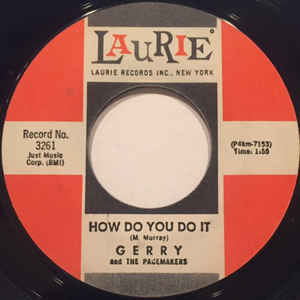Monthly Archives: October 2025
Place Marketing: Can cities be brands?
- Friday, 31 October 2025 11:28
- Written by Julian Stubbs
- 0 Comments
A CRISP Approach to Place Marketing
- Friday, 31 October 2025 11:01
- Written by Julian Stubbs
- 0 Comments
In my organisation – UP THERE, EVERYWHERE – we work a lot with place marketing. Now although place marketing is a highly demanding and very specific area with its own unique set of challenges, learning from some of the best practices of regular consumer goods brands is important, and many practices and issues are applicable. I’d like to introduce you to a friendly little acronym we have developed at UP THERE, EVERYWHERE -. CRISP.
Consumer brands teach us that whatever strategy and tactics we might use and whereever the message might appear, it has to be deployed in a consistent fashion.
McDonalds provides a great example of a brand that is incredibly consistent globally in managing its messaging but more importantly in managing its products and customer experience. Wherever the brand touches consumers its consistent. Do we go to McDonalds for the best food in the world? Possibly not.
Do we go there because its consistent wherever we visit a McDonalds in the world? Absolutely. Whatever you are going to do, do it consistently.
When it comes to the positioning and marketing approach you take for your brand, it also has to be relevant to your brands offering as well as relevant to the audience you are talking with. The Energizer Bunny has been bopping around our television screens since 1989 and has been used by the Energizer Company of St. Louis, Missouri to demonstrate the companys claimed superior battery life. The little pink bunny with its motto of Keep Going perfectly communicates the relevance of this message. The campaign has resonated with the public so well in fact, that the bunny has his own personal website where he (and Im assuming despite his colour preferences its a he rabbit) lists a number of personal facts, among them that the person hed most like to meet is Lance Armstrong. Relevance is everything in brand building.
Emotional intimacy is central to branding. We all make our choices based on a mix of both practical as well as emotional reasons. Great brands know that you have to leverage emotional intimacy. I love holding workshops with engineers, indeed some of my closest friends are engineers. The wonderful thing is that they are very logical people and often claim never to have acted out of emotional intimacy in their lives. Everything comes down to cost and specification. Id love to have seen some of these people propose to their wives or husbands if thats the case. Well, you seem to be the best available model for your age, I reckon youre a fair catch for what its going to cost me. Now would you like to get married? Dont think so.
These logic driven individuals also claim that, frighteningly, their customers are just like them. Again its about cost and specification. Now Ive observed a number of times these are the same people who drive up in a BMW or a Mercedes. They are the same people who stand there with a Mont Blanc pen tucked in their shirt pockets. When I see this, I always offer to swap my Pilot ball pen, which is a fine pen having cost me all of three dollars for their Mont Blanc but they never seem to want to take me up on the deal. Strange really, I reckon my Pilot works equally well. The truth is we all buy things for a mix of both practical as well as emotional reasons. To get people to love you and your brand you need emotional intimacy. Its not all pure logic. Thank goodness. Get close to your consumers and get intimate.
Getting people involved on this level is vital for, consumer, business to business and Place Brands.
The idea at the centre of the brand approach will also need to be very simple, to cut through all the media noise we are all increasingly facing every day. Simple ideas are normally powerful ideas. The remarkable Sam Goldwyn said: If you cant write your movie idea on the back of a business card, you aint got a movie. This same sentiment is equally applicable to any great idea. In essence, they have to be simple. Apple is one of the best known brands in the world, and its advertising always goes right to the heart of the issue with its simplicity. Great brands make a habit of keeping things simple.
Finally, if we are going to be serious about gaining some traction and awareness from our marketing efforts, we will also need to be persistent over a long period of time. Great brands keep on going, doing similar things over an extended period of time. Again a bit like that really annoying little pink Energizer Bunny. But take Coca-Cola – the worlds most valuable brand. In the 2011 Interbrand Best Global Brands Report, the Coca-Cola brand has an estimated book value of plus US$ 72 billion. One of the keys to the success of the brand has been the persistence shown by the company since it was started in 1886. The same basic theme of delicious and refreshing is still used today over one hundred and twenty years after it was launched. Being persistent its the real thing.
Acronym for the day – CRISP. Consistent, Relevant, Intimate, Simple and Persistent.
What The Beatles Taught Me About Branding by Julian Stubbs
- Friday, 31 October 2025 10:26
- Written by Julian Stubbs
- 0 Comments
How Do You Do It?
How do you create a great brand? Well, great brands get great by doing great things. Making brave decisions, sticking their necks out and importantly sticking to their principles. In September 1962 the then un-known Beatles were desparately looking for their first number one hit. Their first single, Love me do, had failed to reach the top of the charts. The pressure was very much on them to produce a hit – and quickly. Their producer, the great late Sir George Martin, offered them a song he had. It was called How do you do it?. Martin promised them a sure fire number one hit record, and the fame, fortune and goodies that would follow.
What did the boys say? They turned him down. They turned him down on the grounds that the record just wasn’t right for them – it simply didn’t live up to the standards they were setting themselves.
How many brands given the same pressure to perform in the short term would really stick to their own principles and do the right thing for the longer term perspective?
It’s a key question and one that sets great brands apart.
As for How do you do it? the song eventually became a number one hit in the UK – as predicted – but for another Liverpool band called Gerry & The Pacemakers (A band I love as well because they were the group behind You’ll Never Walk Alone, the Liverpool Football Club anthem but that’s another story).
But as for the Beatles, well, they went on to even greater things.
Their producer, the great late Sir George Martin, offered them a song he had. It was called How do you do it?. Martin promised them a sure fire number one hit record, and the fame, fortune and goodies that would follow.
What did the boys say? They turned him down. They turned him down on the grounds that the record just wasn’t right for them – it simply didn’t live up to the standards they were setting themselves.
How many brands given the same pressure to perform in the short term would really stick to their own principles and do the right thing for the longer term perspective?
It’s a key question and one that sets great brands apart.
As for How do you do it? the song eventually became a number one hit in the UK – as predicted – but for another Liverpool band called Gerry & The Pacemakers (A band I love as well because they were the group behind You’ll Never Walk Alone, the Liverpool Football Club anthem but that’s another story).
But as for the Beatles, well, they went on to even greater things.
